How easily applied decorative plaster on the walls in the kitchen
traditional tiles, washable wallpaper, paints have long been used for the decoration of the walls in the kitchen room. Decorative plaster in the apartment and on the kitchen rarely used, and completely undeserved. She looks great and also hides minor surface irregularities. Decorative plaster - a granular mass with fillers (crumbs of natural stone, synthetic granules or wood fibers).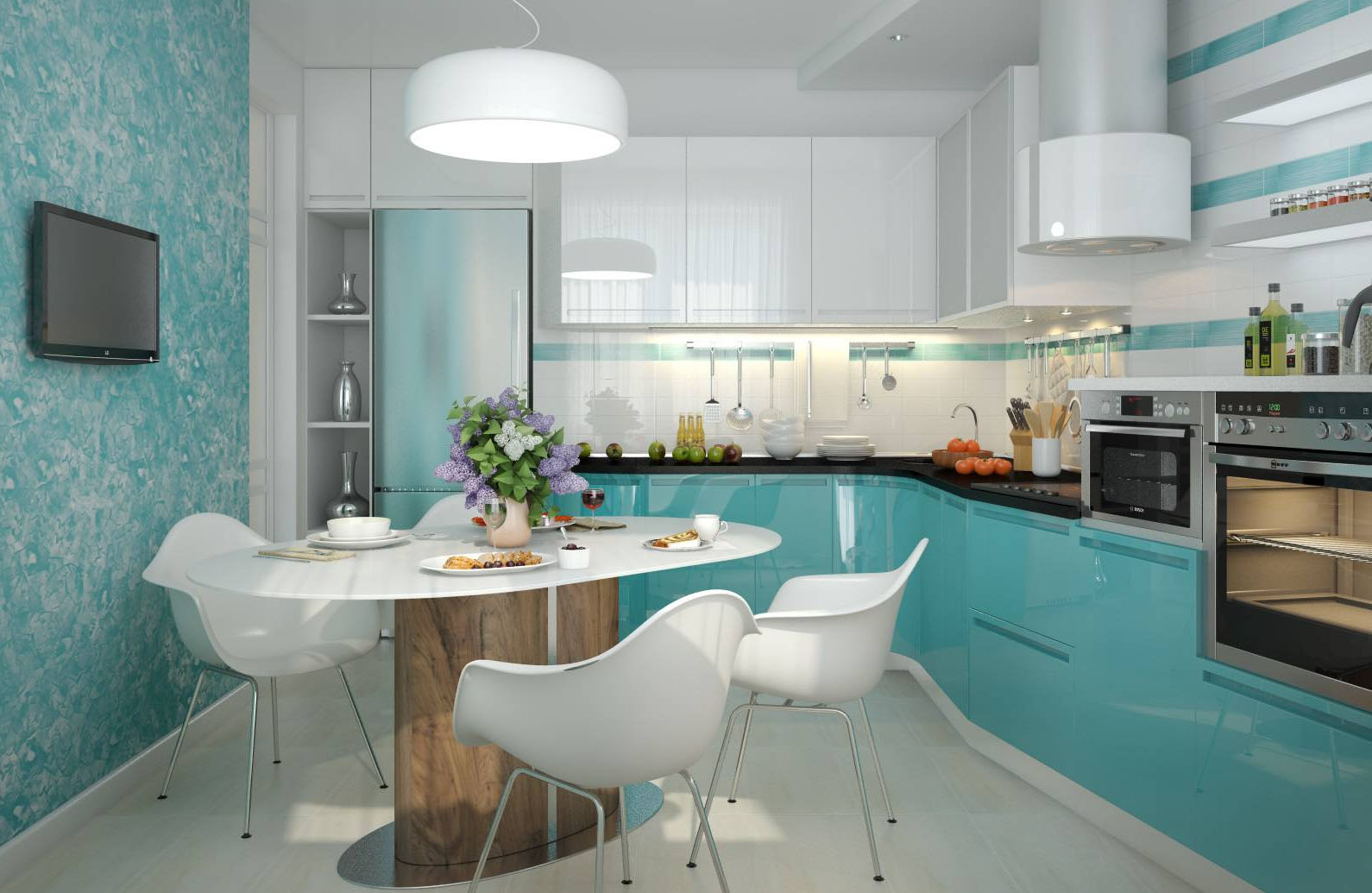
Technique of decorative plaster has been known 400 years old, but while not everyone can afford such a finish. Now everyone can own hands to decorate the walls of his home a unique texture, using modern materials and tools.
Variety of decorative plaster
In the market we hear different names of decorative plaster: stylish, textured, structural, relief. But the differences between them have. for example, structural composition forming the desired relief after special operations, advanced builder, and textured immediately display their decorative effect (these include liquid wallpaper and colored stone chippings).
There are some types of decorative plaster:
- Lime-sand. Used for thermal insulation and facades, It is considered to be low-cost material.
- stone (plaster and stone chips). They are durable, easy to put on the wall.
- latex (artificial latex). Resistant to mechanical shocks.
- silicate (potassium silicate). Long retains the purity and the original appearance, since it is not soiled and does not swell. The main condition - drawing on pre-prepared surface, arenaceous.
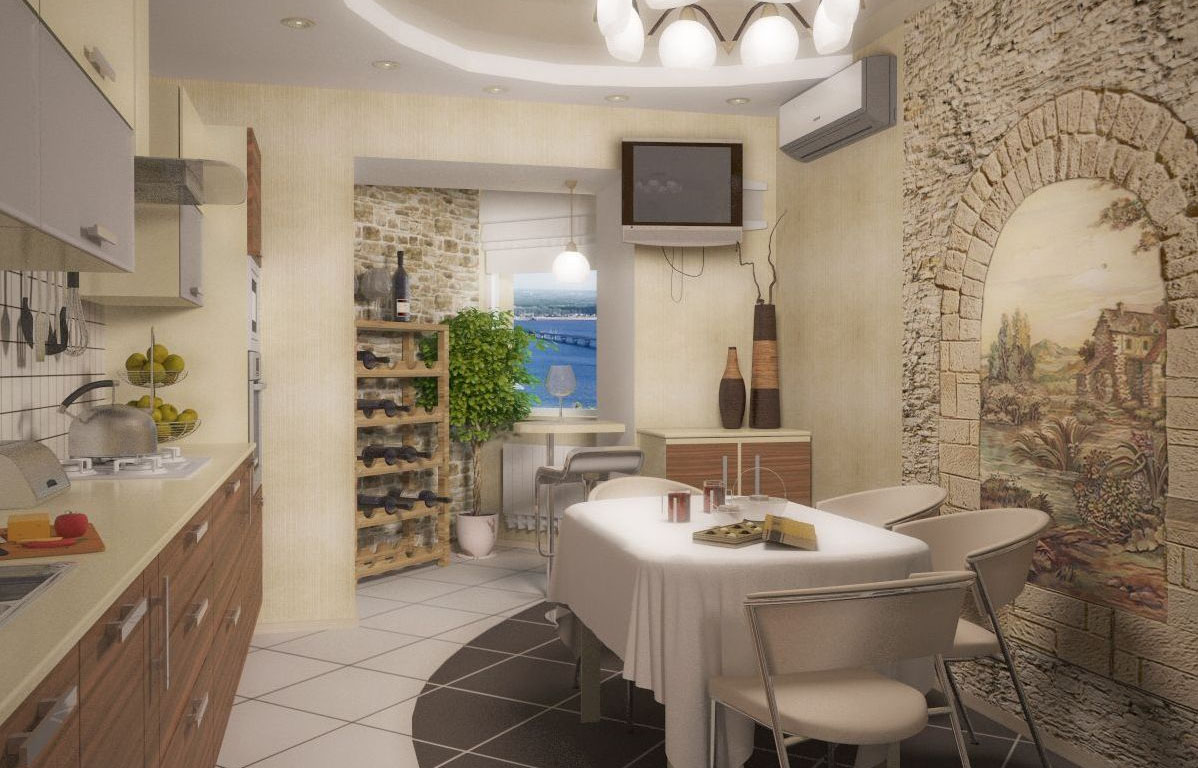
According to the size of the finished compositions are fine-grained (look carefully, but are subject to mechanical stress) and coarse (durable, give a dense texture and relief). Synthetic mixtures are sold as a finished product, Kohler them immediately prior to application to the surface. This eliminates the need for staining is already finished walls.
By coating the invoice is distributed so:
- Venetian;
- koroed;
- simulation water droplets on glass surface;
- rock;
- fur coat;
- visual effect silk fabric;
- stone imitation;
- with marble crumb.
Venetian decorative plaster - the optimal choice for a luxurious finish of the walls in the kitchen room. The composition comprises marble dust, which gives the room a sophisticated look. But it does not suit all types of cuisines. Furniture and fittings, too, should look rich and presentable.
Pros and cons of decorative plaster
Decorative plaster in the interior of the kitchen has undeniable advantages:
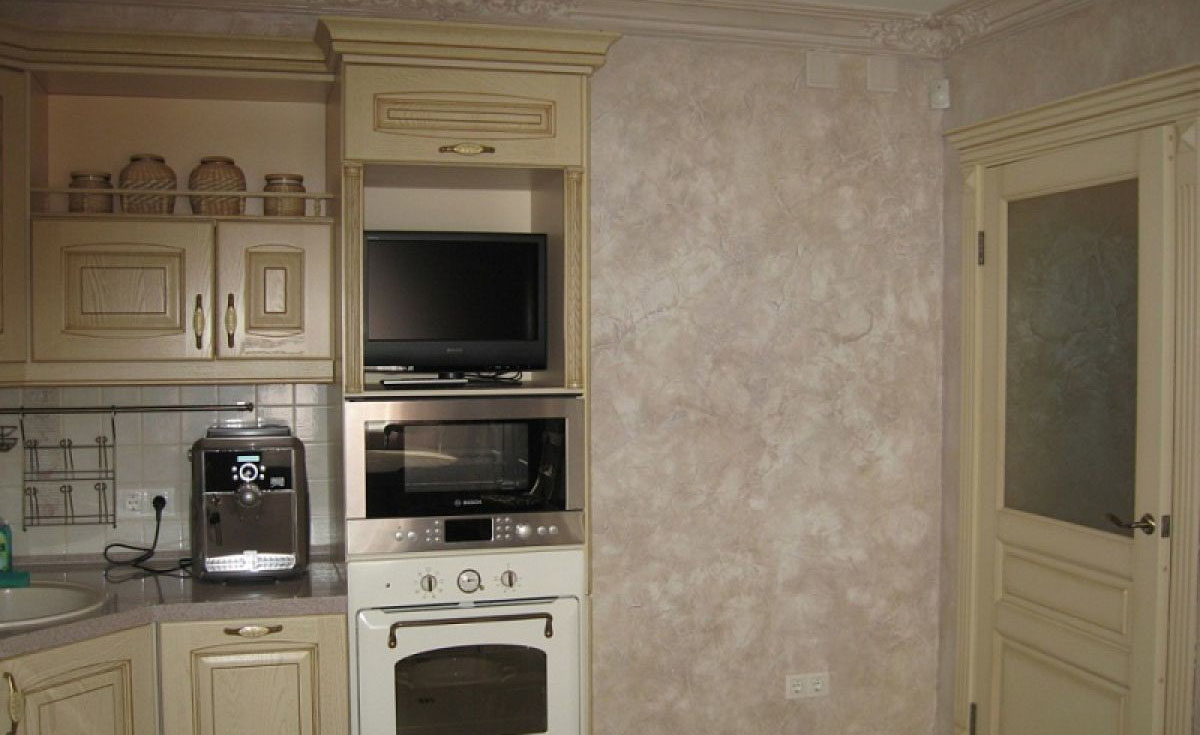
- easy to clean without topcoat layer damage;
- It retains the original color and texture for decades;
- vapor permeable, uniform (no seams);
- It has excellent soundproofing;
- safe and clean (it does not emit toxic substances, does not burn, It has antiseptic properties);
- kitchen does not absorb odors and moisture;
- resistant to the adverse effects of high temperatures;
- quickly applied to the surface;
- hides minor defects and irregularities of the walls;
- successfully combined with wallpaper, ceramic tiles, wood paneling;
- It provides an opportunity for creativity;
- It has a wide palette of colors and textures.
The kitchen room is not necessary to decorate the wall is too rough coating. The rough surface is contaminated and faster when exposed to moisture mildew. But such a decorative wall coating helps hide flaws (so at the preparatory stage, you can not achieve perfect evenness).
For kitchen best option would be a smooth glossy finish, to which is applied a protective layer of lacquer or wax. As an option, coating textured wall decorate, but the apron of the working area perimeter trim tiles or hardened glass.

Decorating the kitchen wall decorative plaster does have minor flaws:
- the high cost of the material (but it pays off in the early years);
- problematic dismantling (for the removal of such a coating for at least require Bulgarian and hammer. Work hard and dusty);
- the complexity of the work (Apply sophisticated coating without basic skills is difficult, better to invite the master).
design tips
Finishing decorative plaster cuisine has its own nuances, which not everyone knows. Renowned designers are not advised to make out all the walls of such a coating kitchen. The fact, that over time such motley finish bored. It is better to use this material accents in the room and play on the contrast:
- Textured coating decorate one wall, thus solve the problem of zoning kitchen.
- Color composition is selected so, that it in harmony and combined with kitchen unit or flooring. Well-chosen color contrasts do not look less impressive, than harmonious blend tone on tone.
- Plaster Kitchen is even used to cover the ceiling. room, in this manner, It becomes a unique and unusual.
- It is interesting to look three-dimensional images and ornaments, made on the uncured composition using stencils.
- Hands professional masters, possessing artistic taste, can create even real pictures of decorative plaster.
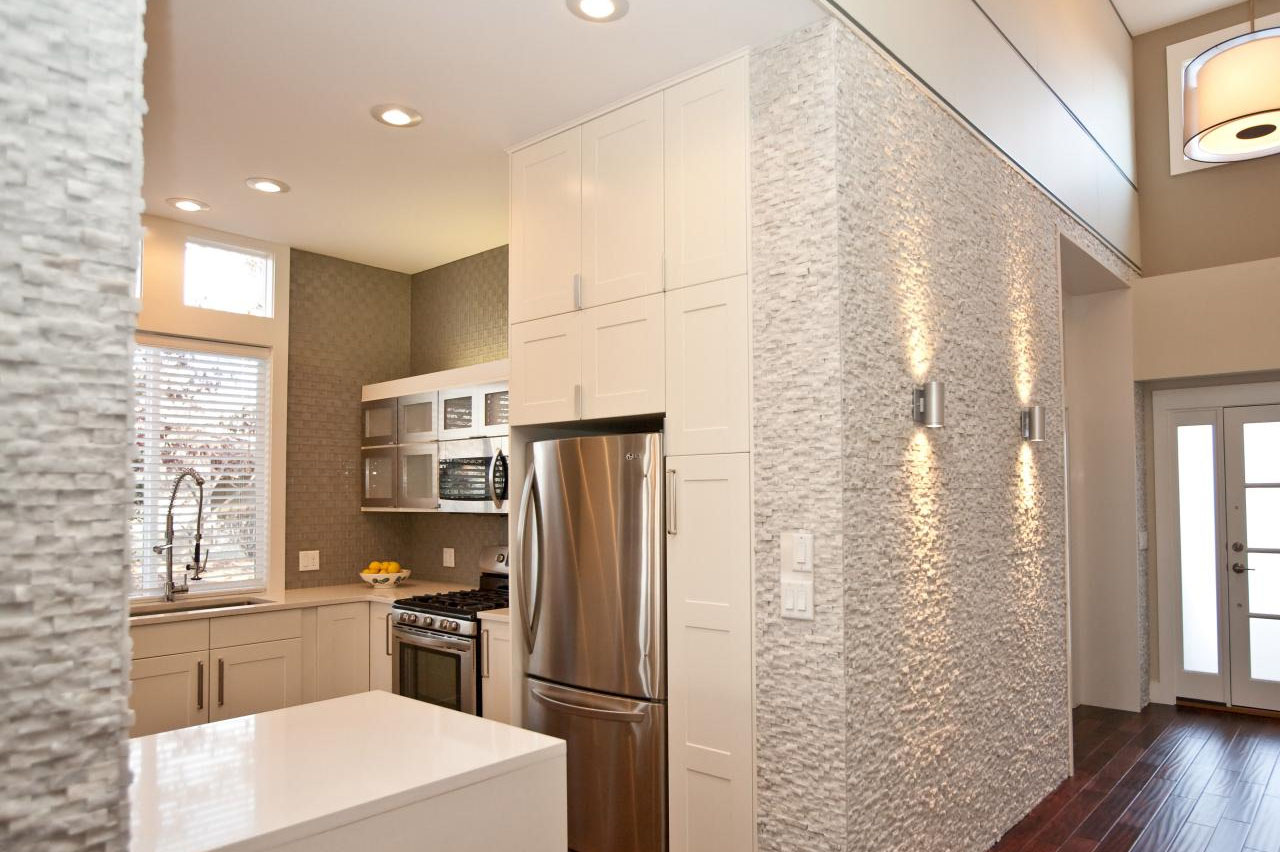
How to apply the plaster
If the owner has decided to apply a decorative mix independently, he must soberly assess their capabilities. wall plaster technique is different complexity and requires construction skills and reserves of patience. For one day to finish the job will not work, since textural compositions are applied in 3-4 layer, each of which must be completely dry. But if there is a great desire and inspiration, everything is possible. Before you begin, it is desirable to carefully review any master class for applying plaster or read a dozen articles of the category "All of the decorative plaster". On any construction site, you can view examples of decorative plaster and illustrative photo, the room looked like before and after repair.
Art plaster walls imply strict adherence to rules and order of business. The main stages when working with a decorative plastering:
- Preparing walls. Surface coating is cleaned from the previous and the maximum level the defects and flaws.
- Padding. To a mixture of tightly clutched with the walls, they applied the primer 2-3 layer. The primer composition is chosen according to the type and kind of solution walls.
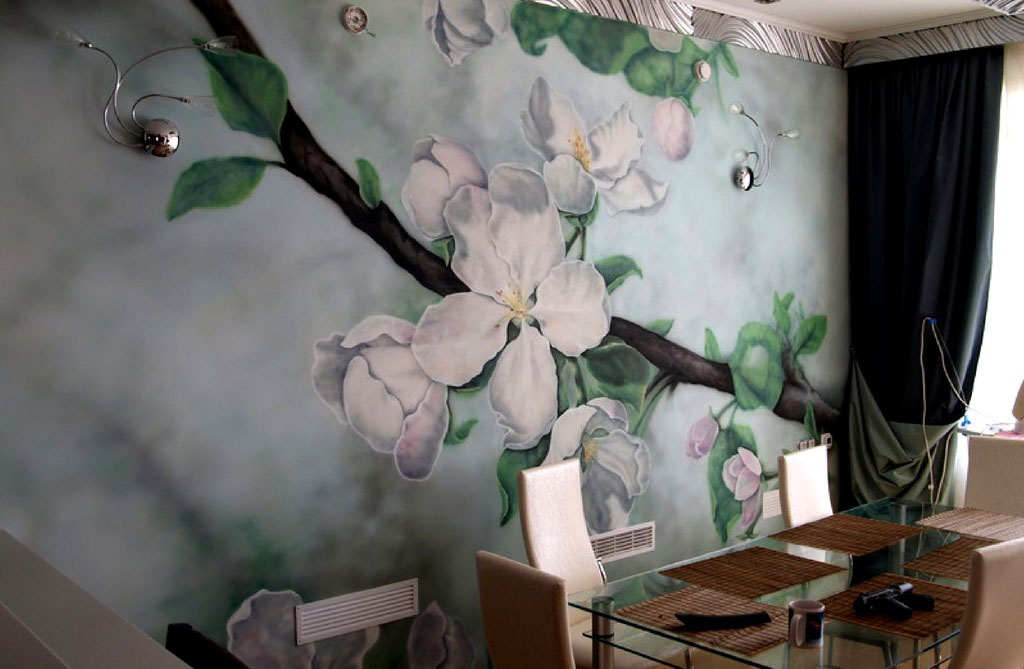
- Application of decorative mixture. First depositing a first layer, which serves as the basis for the next decorative layer. The mixture is filled swings, depressions and defects, To obtain a smooth surface.
- Laying decorative plaster. The composition is applied in accordance with the instruction, and depending on the effect, to be achieved.
- Painting and polishing. This is the last stage, which commence after the complete drying of the solution (not less than one day). To make the coating glossy effect, it waxed or treated with special polishing compositions.
Texture hardens after 35-45 minutes after application. During this time you must have time to form patterns (if there is a need). Self-coloring composition is produced before the application of. When the surface is dry, the color becomes lighter.
That there was no noticeable transitions, plaster is applied on the entire surface of the planned. To beautifully applied obliquely solution, you must mark the wall with a pencil and stick masking tape on the markup. The tape was removed as the work.
Finish "under the bark beetle," he recalls pitted bark beetle-borers. This pattern occurs because screed solution, during which the mineral grit moves under the float and creates a unique pattern.
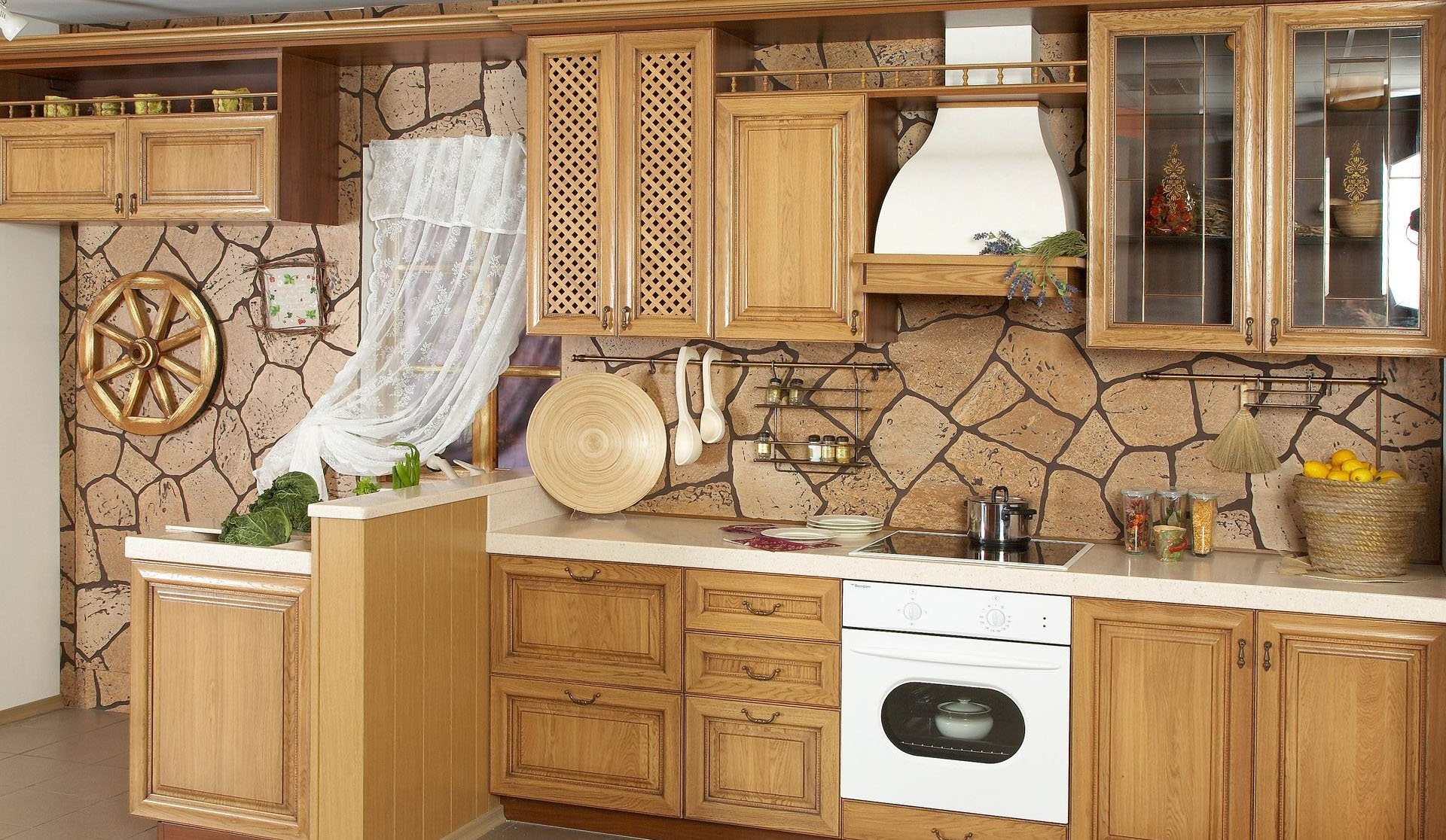
Modeled plaster gives a wide scope for the imagination. Methods of applying a plurality of textured plaster. It can be applied to any image or texture, using improvised devices. The use of special tools or common objects easier to work:
- cushion for decorative plasters;
- stencils;
- notched trowel;
- scrubbing brush;
- sponge for washing dishes.
Venetian plaster (or decorative marble plaster) - praktychnoe, expensive and beautiful coating. The technology works is complex and involves the application of several thin layers of plaster, which are dyed and polished. Methods of application Venetian stucco variety, so no experience is not easy to make such manipulation. But the result is worth the effort. Venetian interior looks rich and presentable.
Before working best to practice on a separate sheet of drywall or on the walls of the utility room, to look at the result obtained. If such work is not under force, or the final result is not satisfied, it is better not to translate expensive material is wasted and invite professional master finisher.
